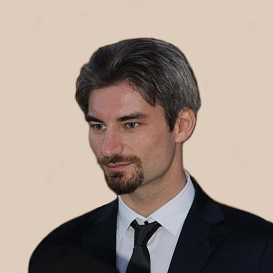New Trends on Sensor Devices for Space and Defense Applications
A special issue of Sensors (ISSN 1424-8220). This special issue belongs to the section "Optical Sensors".
Deadline for manuscript submissions: 31 August 2024 | Viewed by 14127
Special Issue Editors
Interests: fractional FDTD; antennas; fiber optics; multiphysical modeling
Special Issues, Collections and Topics in MDPI journals
Interests: electroporation; pulsed eletric field; computational dosimetry; electropermeabilization; cell membrane; transmembrane voltage; electromagnetic simulations
Special Issues, Collections and Topics in MDPI journals
2. Associate Professor, Electromagnetics Group, Department of Electrical Engineering, Eindhoven University of Technology, P.O. Box 513, 5600 MB Eindhoven, The Netherlands
Interests: full-wave analysis and design of passive devices and antennas for satellite; wireless; radar applications; development of analytically based numerical techniques devoted to the modeling of wave propagation and diffraction processes; theory of special functions for electromagnetics; deterministic synthesis of sparse antenna arrays and solution of boundary-value problems for partial differential equations of mathematical physics
Special Issues, Collections and Topics in MDPI journals
Interests: UWB antennas; UWB microwave circuits; MMIC GaN devices; Computational Electromagnetics; Microwave Spatial Combiner; Phased Array Antennas; Metamaterials; AOA algorithms.
Special Issue Information
Worldwide investment in novel technology for defense and space applications is growing.
The requirements in terms of high-performance devices working in extreme physical conditions represent a challenging design for the scientific and technical community. Such devices have to be designed ad-hoc depending on the application and the physical working condition.
Several applications in space and defense require sensors regarding a wide range of physical domains, ranging from the electromagnetic spectrum (i.e., antennas, optical and gamma ray sensors) to thermal measurement and movement and gravitational waves.
The aim of the Special Issue is to present the state-of-the-art of sensor devices for space and defense purposes.
Dr. Pietro BiaProf. Dr. Luciano Mescia
Prof. Dr. Diego Caratelli
Dr. Antonio Manna
Guest Editors
Manuscript Submission Information
Manuscripts should be submitted online at www.mdpi.com by registering and logging in to this website. Once you are registered, click here to go to the submission form. Manuscripts can be submitted until the deadline. All submissions that pass pre-check are peer-reviewed. Accepted papers will be published continuously in the journal (as soon as accepted) and will be listed together on the special issue website. Research articles, review articles as well as short communications are invited. For planned papers, a title and short abstract (about 100 words) can be sent to the Editorial Office for announcement on this website.
Submitted manuscripts should not have been published previously, nor be under consideration for publication elsewhere (except conference proceedings papers). All manuscripts are thoroughly refereed through a single-blind peer-review process. A guide for authors and other relevant information for submission of manuscripts is available on the Instructions for Authors page. Sensors is an international peer-reviewed open access semimonthly journal published by MDPI.
Please visit the Instructions for Authors page before submitting a manuscript. The Article Processing Charge (APC) for publication in this open access journal is 2600 CHF (Swiss Francs). Submitted papers should be well formatted and use good English. Authors may use MDPI's English editing service prior to publication or during author revisions.
Keywords
- Antennas;
- Fiber optic;
- Optical devices;
- Hyperspectral sensors;
- Radiation hardened sensors;
- Thermal sensor;
- Movement gyroscope;
- Gravitational wave antenna;
- Remote sensors;
- Physical sensors;
- Cooperative sensors









